By Wang Jingyao, Wireless Development Expert at Alibaba Entertainment
Released by AliENT
Virtual reality (VR) has an increasing number of application cases in different industries. With 720-degree panoramic cameras, some manufacturers perform multifurcating tree modeling based on multi-view photos. It is a technique that has been widely used in real estate companies, such as Lianjia. In the ticketing industry, similar seat selection products have also been piloted in and outside of China; examples include TicketMaster and StubHub outside China and Moretickets in China. For large venues, the current implementation tends to adopt a 3D modeling + post-rendering approach to output ECB-based panoramic photos. The output photos are primarily used for displays on multiple big frontend clients.
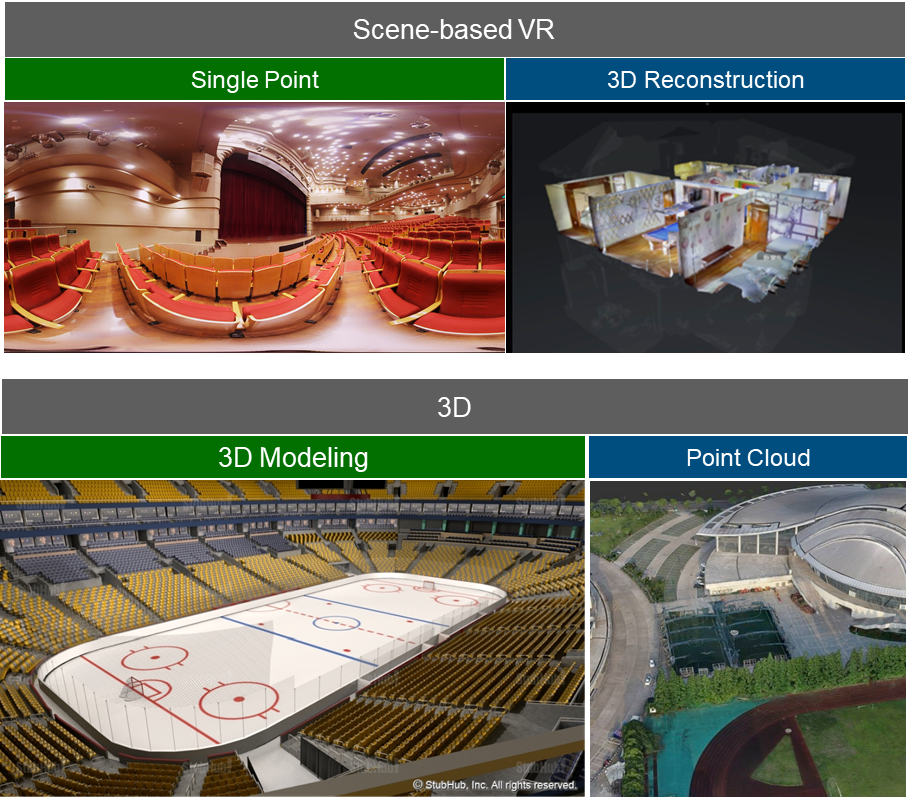
Damai's intention of implementing panoramic VR was to provide assistance and an immersive experience for users' seat selection decision-making. After Damai comprehensively evaluated the user interaction and implementation cost of the seat selection pages, it opted for modeling + panoramic rendering for large venues and VR shooting for small venues.
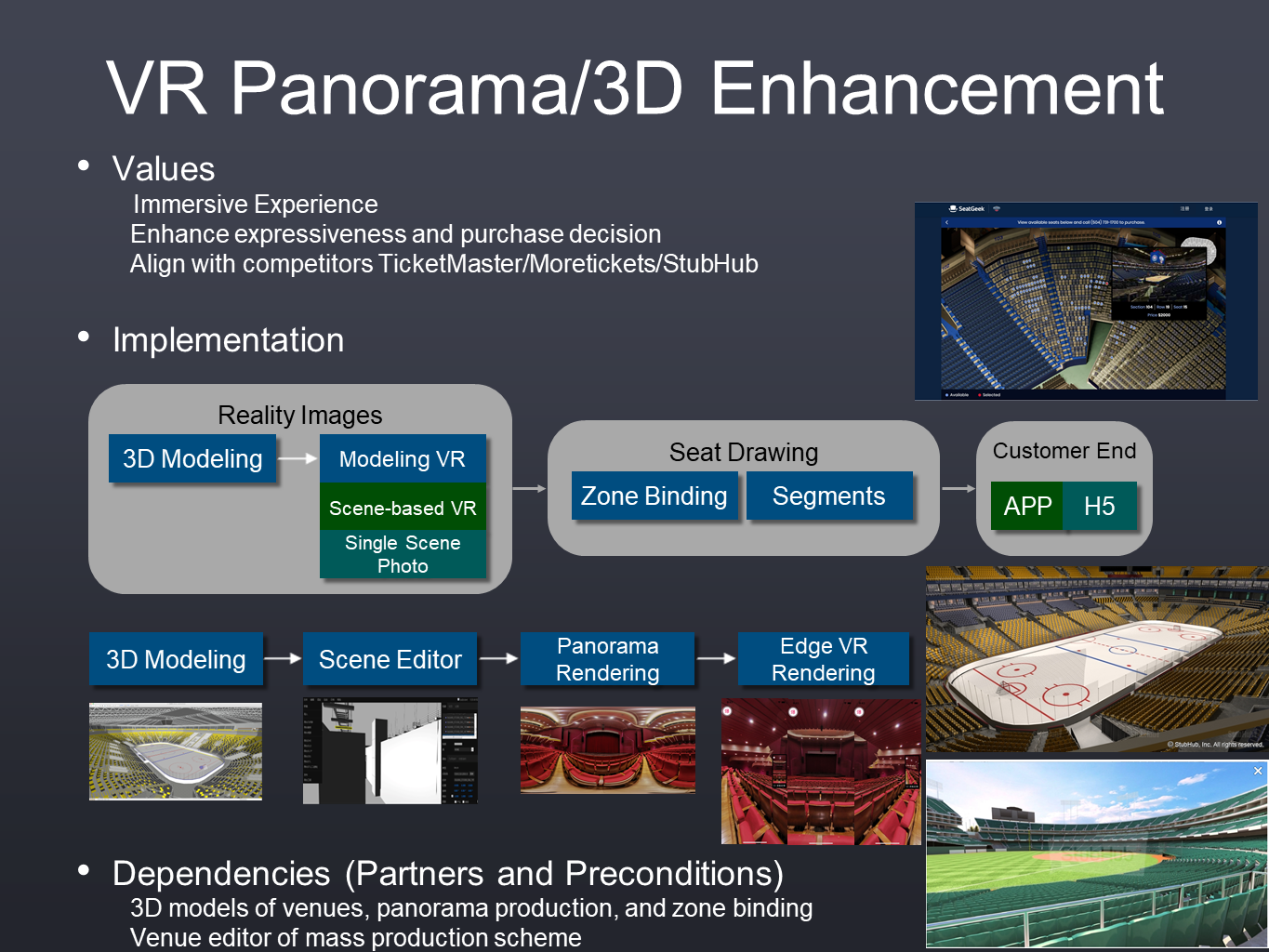
A venue model is established in the classic Autodesk 3ds Max program through the process of outputting white mold and texture mapping.

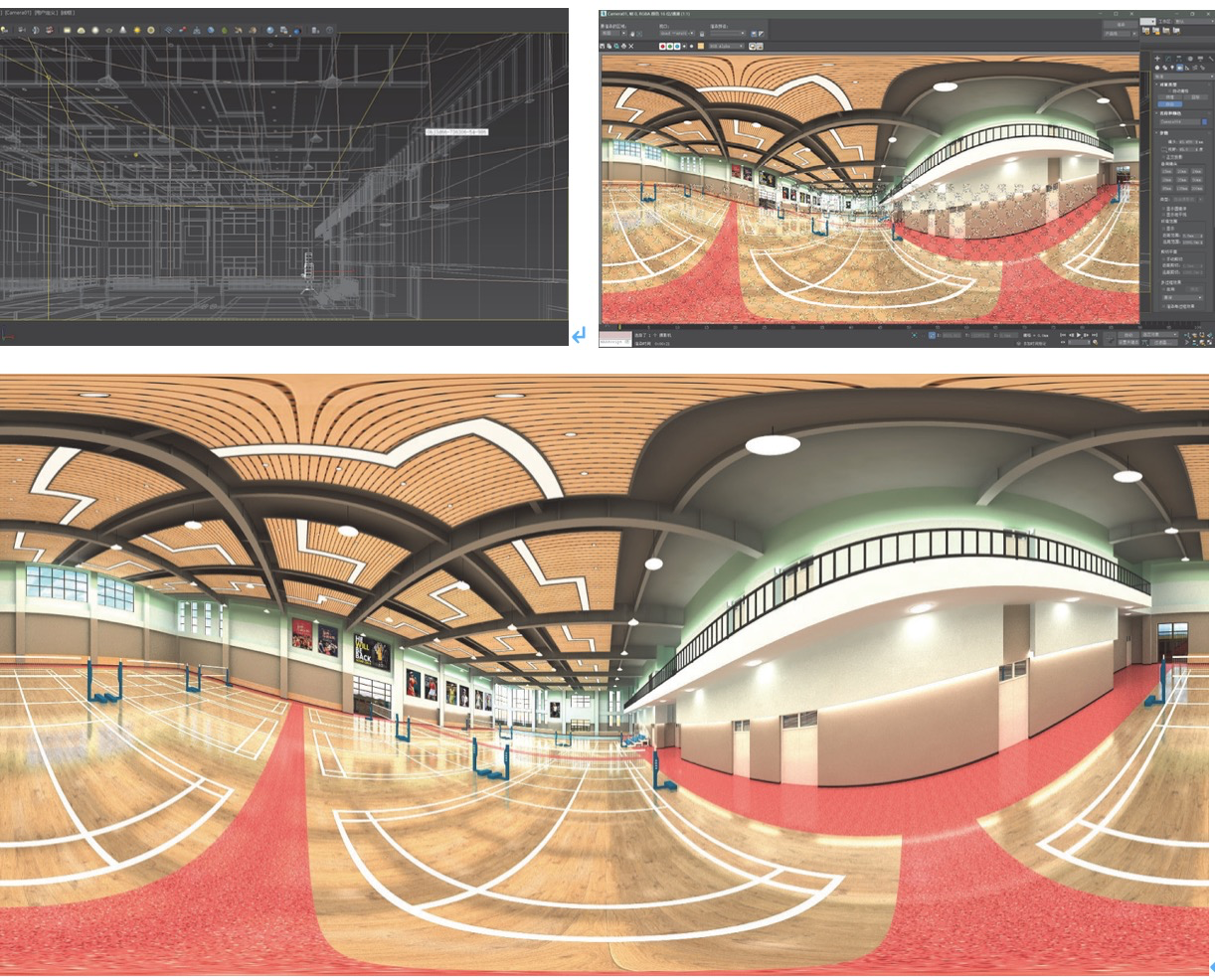
The whole process is divided into four major parts based on milestones: modeling/shooting > production > underlying platform of seat selection > big frontends.
Currently, the conventional scheme of 3ds Max is used for modeling, while Damai is still investigating the mass production scheme based on 3D laser radar + SLAM.
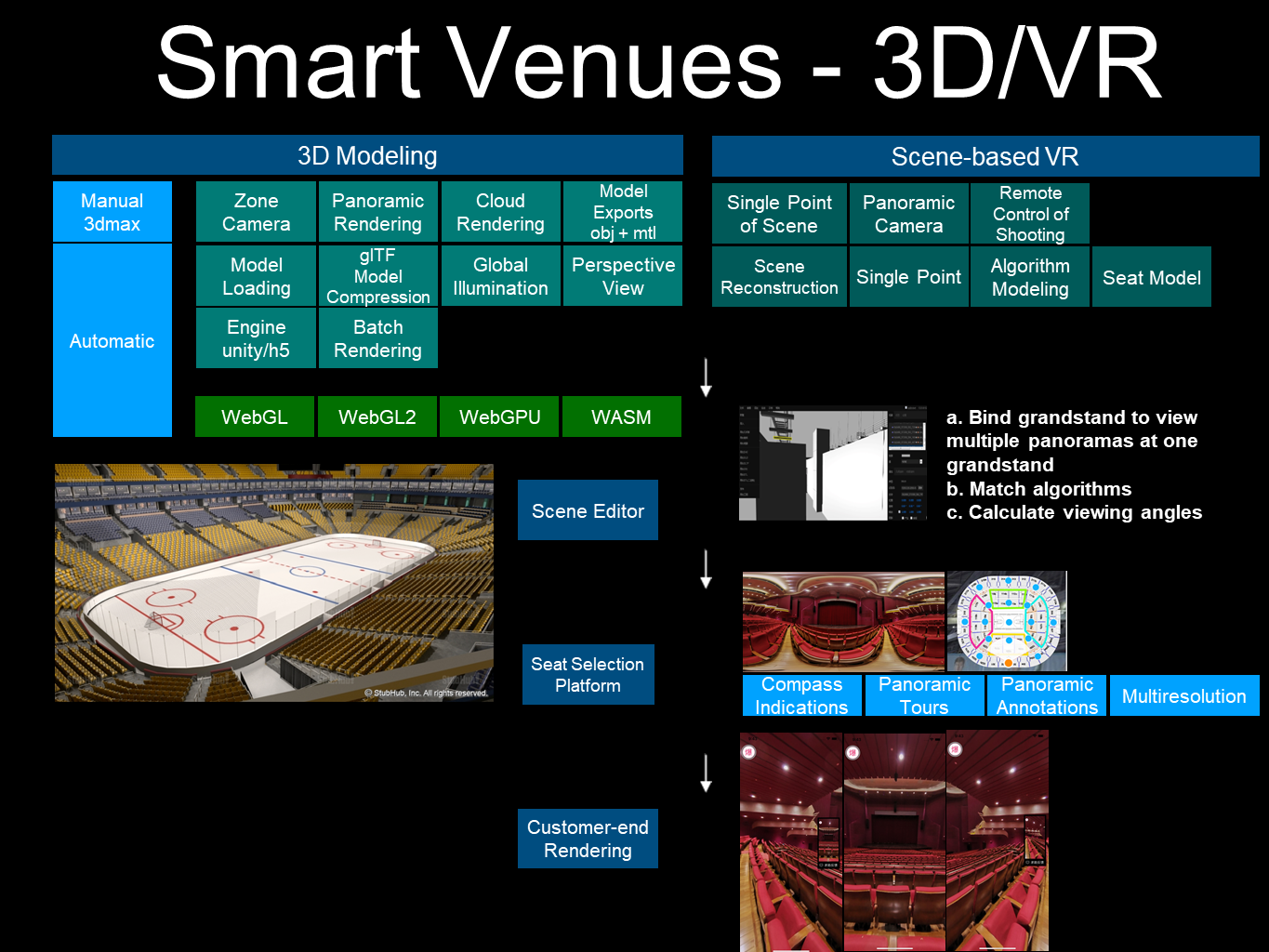
An output venue model of 3ds Max has a capacity between 50 MB and 200 MB. After being compressed by the glTF model and combined with LOD multi-level detail texture, an ultra-large texture venue based on three.js can be opened more efficiently.


The overall VR solution adopts a projection scheme based on ECB spherical coordinates to render and synthesize photos into 2:1 panoramic photos. The photos undergo compression by MozJPEG, intelligent noise reduction, and super-resolution reconstruction before they are rendered by the VR engine. This also lays a solid foundation for displaying panoramic photos within seconds. Regarding big frontend VR engines, Android/iOS engines are comparatively mature on the app side, and therefore Google/Apple built-in schemes are used. On the H5 side, engines vary in terms of performance and integration. Damai finally decided on Pannellum as the top choice after studying several common engines on the market. Pannellum supports extended functions, such as compass indication, panoramic tour, panoramic annotations, and multiresolution.
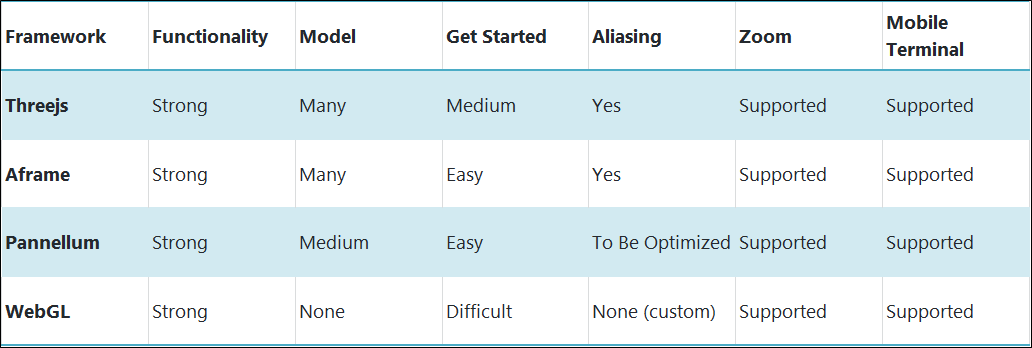
GVR optimized the packaging of perspective view, fisheye view, stereographic view, architectural view, Panini view, little planet view, and other views. This optimization includes but is not limited to:
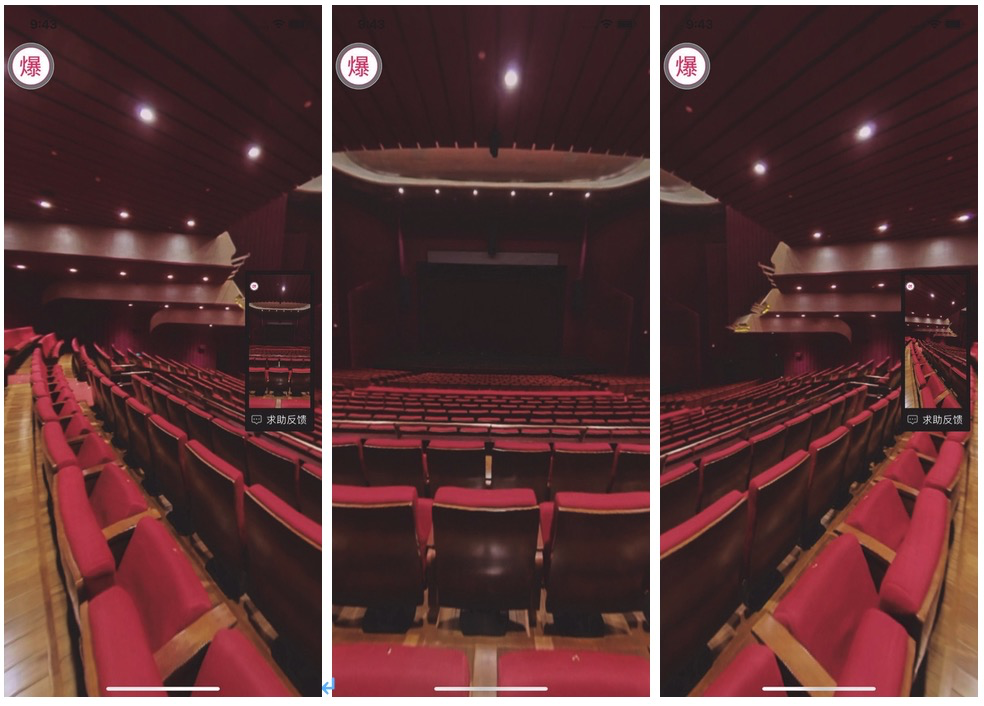
Comprehensive implementation of the VR solution requires modeling and photographing many venues, making mass production necessary. The process can be split into the following steps:
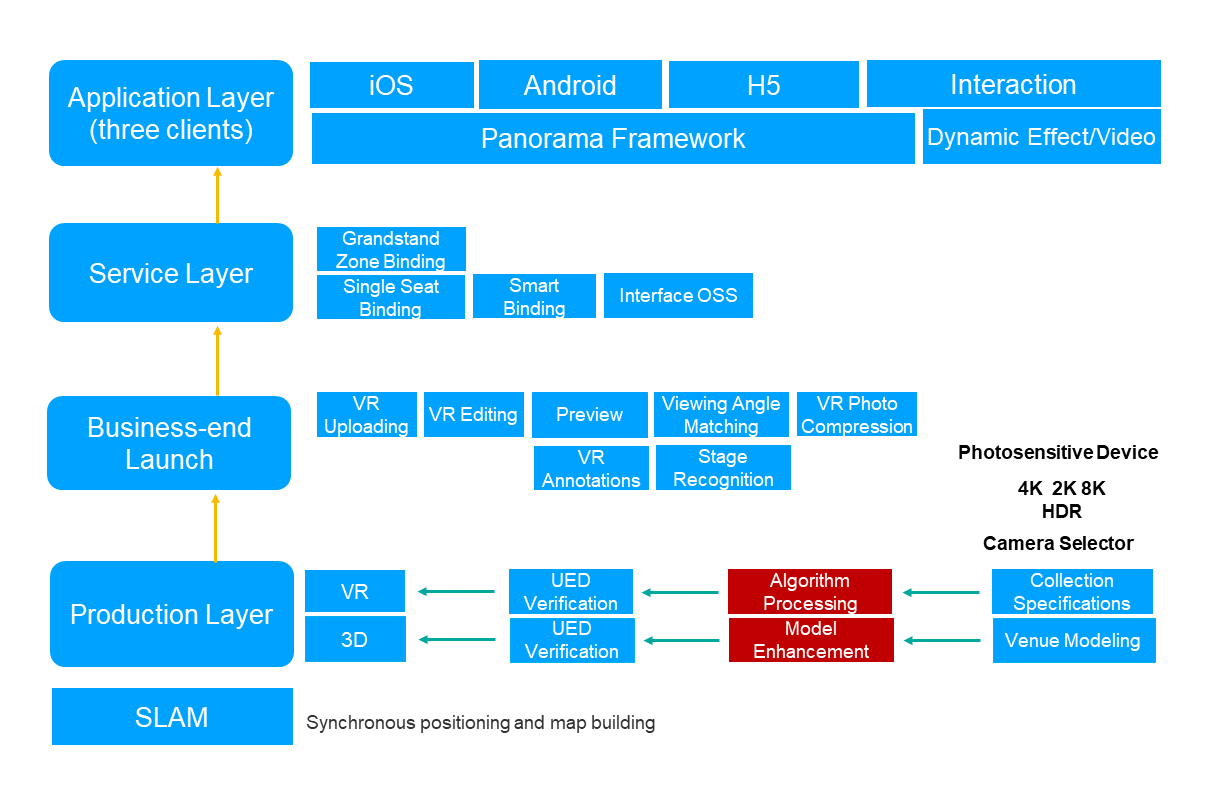
Synthesis optimization, Lanczos/HPX-based photo compression, and stream cipher encryption are performed on online photos to ensure the instant access and data security of users. The continuous development of 3D and VR technologies is an important part of building smart venues. They also provide users with visualization methods to make purchase decisions. After mass production, Damai will continue to explore cloud rendering modeling and commercial marketing capabilities based on large-scale scenarios to bring a better immersive experience to users.
Sentinel Go 1.0 Release: High Availability Flow Control Middleware for Double 11

2,599 posts | 765 followers
FollowAlibaba Clouder - October 27, 2020
Alibaba Clouder - March 24, 2017
Alibaba System Software - December 6, 2018
Alibaba Clouder - November 5, 2018
Alibaba Clouder - July 16, 2021
Alibaba-Cloud-GTS - August 25, 2021

2,599 posts | 765 followers
Follow Bastionhost
Bastionhost
A unified, efficient, and secure platform that provides cloud-based O&M, access control, and operation audit.
Learn More Managed Service for Grafana
Managed Service for Grafana
Managed Service for Grafana displays a large amount of data in real time to provide an overview of business and O&M monitoring.
Learn More VPC
VPC
A virtual private cloud service that provides an isolated cloud network to operate resources in a secure environment.
Learn More Media Solution
Media Solution
An array of powerful multimedia services providing massive cloud storage and efficient content delivery for a smooth and rich user experience.
Learn MoreMore Posts by Alibaba Clouder